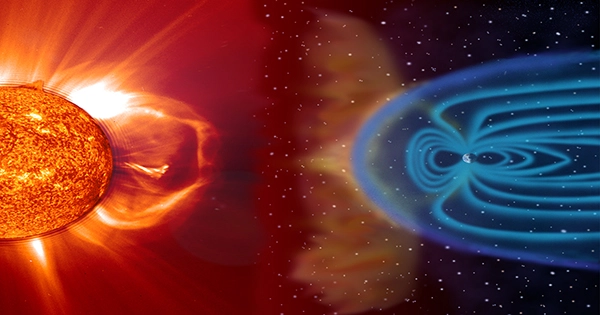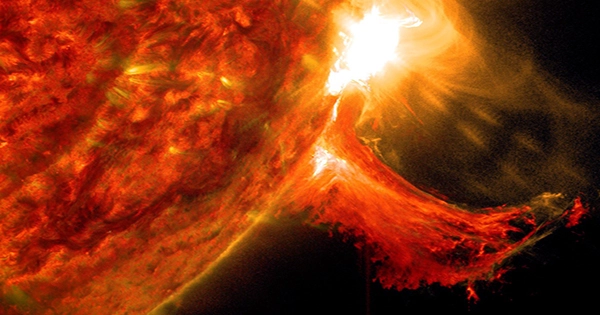High-frequency views of solar flares leaping away from the Sun can sometimes resemble a hand, with numerous thin streamers extending skyward, known as a Flare Arcade. Flares in video form depict the opposite; with fingers of darkness winding down towards the Sun. Astronomers believe they have now figured out what these “downward-moving dark gaps” are made of fluids of different densities unmixing. Perhaps the rings of darkness threateningly approaching our source of light once called after a dark king from a fantasy story or a mythological light-defying demon.
Supra-arcade downflows are the more common name for them, having only found in 1999 as extreme ultraviolet and soft X-ray photographs of the Sun became available. At least the abbreviation is SADs. After 23 years, researchers have finally provided an explanation for SADs in Nature Astronomy.

Astronomers developed a theory almost as soon as SADs were discovered. The magnetic field of the Sun becomes distorted and condensed prior to solar flares. As the field reconfigures, the energy is released, resulting in flares. “It’s like stretching a rubber band and cutting it in half.” In a statement, Dr. Kathy Reeves of the Harvard & Smithsonian Center for Astrophysics said, “It’s pressured and stretched thin, so it’ll snap back.”
The assumption that the SADs are a result of the snapback was a no-brainer. “Magnetic reconnection is a universal phenomenon that powers explosive energy-release events,” the report begins. Astronomers believe that something comparable, but on a much larger scale, is responsible for the recently discovered object that emits radio waves similar to a brilliant pulsar but at a much slower rate. The observations, however, did not match the theory. SADs coil down slowly, rather than falling swiftly as predicted by simulations. The Solar Dynamics Observatory, which takes photographs of the Sun every 12 seconds at seven wavelengths, produced an abundance of data that provided the tools needed to solve the mystery.
“The absence of plasma is represented by the dark, finger-like spaces. There is a lot less density there than in the surrounding plasma “Reeves clarifies. When we try to blend oil and water-based liquids, such as olive oil and vinegar for a dressing, we have a daily illustration of what happens when fluids of different densities mix. The two eventually separate, no matter how much we stir them together, although the process can be slow. If this is the case, the explanation may make more people pleased than simply solar astronomers. The mechanism described as “analogous to the development of comparable structures in supernova remnants” in the research, thus it could help explain them as well.















